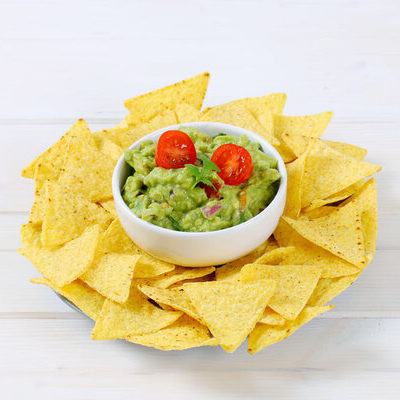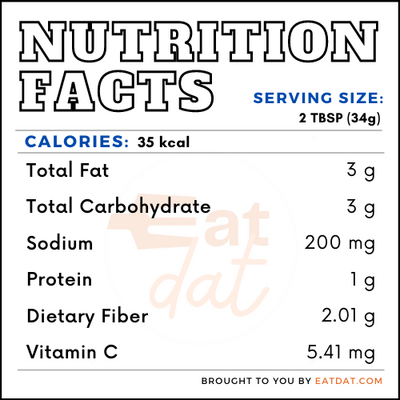
Guacamole
What is Guacamole?
Guacamole is a dip or spread of Mexican origin. The key ingredients in guacamole are avocados, lime, onions, tomatoes, chillies, and salt. It is often served as a side dish to tortilla chips, fajitas, and flour or corn tortillas.
- It is important to choose the right avocado to make guacamole, ensuring that it is ripe for best results.
- There are different avocado varieties, but the Hass variety is considered the best for making guacamole.
The most popular store-bought guacamole brands are:
- Good Food
- Wholly Guacamole
- Hope Foods
- Chosen Foods
- Sabra
- Yucatan
- Herdez
- Frontera
- Cabo Fresh
- Trader Joe’s
Origin of guacamole
There is archaeological evidence to suggest that the avocado has been cultivated in the Americas since 750 BC. Guacamole is of Mexican origin and is attributed to the Aztecs in the 16th century. There are written records that prove that this was called ahuaca-mulli, which means “avocado sauce”. The modern version was created by the Spanish colonists, who tried to plant the tree in Spain and failed. Over time, however, avocado trees were planted in more tropical climates. Guacamole was a rarity in the US for most of the 20th century due to a ban on Mexican import of avocados, which was only lifted in 1997.
Nutrition
This dip is rich in vitamins A, C, E, and K, as well as in B vitamins such as thiamin, riboflavin, niacin, B6, and folate. Copper, manganese, and potassium are also available in this avocado sauce. The fatty acids in avocados help promote a healthy lipid profile and enhance the bioavailability of fat-soluble vitamins and phytochemicals. Regular consumption of avocados may help maintain cardiovascular health, slow atherosclerotic progression in hypercholesterolemic people, keep blood sugar, and blood pressure in control.

Commercial production
Most companies use Hass avocados to make this dip. The ingredients used are avocados, tomatoes, onions, coriander, key lime juice, salt, jalapeño peppers, and garlic. Most of the avocados for guacamole preparation come from Mexico. Avocado trees require rich soil and a warm climate to thrive. An avocado tree takes about 7 years to come to fruit and can produce up to 500 avocados per year.
One negative effect of growing demand for avocados is the illegal deforestation and exploitation of avocado farmers in Mexico. Los Caballeros Templarios, a cartel, even extorted and kidnapped avocado farmers in order to get a percentage of the profits. It is believed that this organization is now defunct. However, the ecological problems remain.
5,575,358 tons of avocado are produced every year. Mexico tops the list of the main avocado producing countries, followed by Dominican Republic, Peru, Columbia, and Indonesia. The USA, Mexico, Dominican Republic, Indonesia, and Columbia are the top avocado consumers in the world. Every year, an avocado festival called Avolution is celebrated in different parts of the world.
Guacamole recipes
This avocado dip can be adapted for use in many different dishes. Here are a few popular recipes:
- Guacamole
- Chicken Melt
- Quesadillas
- Toast
- Sandwich
- Fajitas
- Loaded Guacamole Tacos
- Potato Cups
- Stuffed Tomatoes
- Guacamole Pasta
FDA regulations
Avocado, the primary ingredient in guacamole, is classified by the FDA as fruits primarily used as ingredients. It also falls under the 20 most frequently consumed raw fruits. The USDA regulates the import of avocados and sets standards for their quality.
References
Avocados, Food Source Information, Colorado State University, https://fsi.colostate.edu/avocados
André Gonçalves, Editor & Head of English Market, Avocado Sustainability: What Are the Social and Environmental Impacts of Avocados?, You Matter
https://youmatter.world/en/benefits-avocados-production-bad-people-planet-27107/
Dreher, Mark L, and Adrienne J Davenport. “Hass avocado composition and potential health effects.” Critical reviews in food science and nutrition vol. 53,7 (2013): 738-50. doi:10.1080/10408398.2011.556759, https://www.ncbi.nlm.nih.gov/pmc/articles/PMC3664913/
